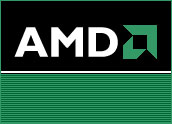
Dell on Tuesday unveiled a wireless card that the company says can provide up to five times the speed and twice the range of the industry’s widely used 802.11g WiFi technology standard.
The greatest productivity comes when connected to a wireless Draft 802.11n network router featuring Broadcom’s Intensi-fi technology. When achieving optimum performance, the Dell Wireless 1500 Draft 802.11n wireless card supports data rates up to 270 megabits per second, versus the maximum 54 Mbps with 802.11g wireless technology, according to the company.
“Transferring large files such as emailing PowerPoint presentations or slideshows and backing up jpegs of the kids or the family vacation from your notebook to your desktop or external storage device will quickly eat up bandwidth,” Clay Rayborn, senior manager, WiFi and Bluetooth wireless products, at Dell, told TechNewsWorld. “In many cases just the significant range improvements will be enough to justify purchasing a Draft N solution.”
Gaining Momentum
Broadcom jumped on the news to tout the momentum its technology is gaining, saying Dell’s “endorsement … expands the ecosystem of high-performance, interoperable WiFi products that can handle bandwidth-hungry applications.
“Intensi-fi solutions deliver the standards-based technology and proven performance that are critical to our notebook partners,” said Michael Hurlston, vice president and general manager of Broadcom’s Wireless LAN Business Unit. “Dell is enabling notebook users to enjoy the untethered experience of high-definition multimedia access, online gaming and music streaming from far corners of their home or office.”
It’s not that unusual for wireless chip vendors to insist that a system that uses their product at both ends is more efficient than one that uses rival products at one end, according to Greg Quick, storage and systems analyst at The 451 Group.
“Half of a device’s potential throughput is often used in overhead, so if a vendor says that it can achieve say, 300 megabits per second, it could actually achieve only 150 megabits per second,” Quick told TechNewsWorld. “By using a dedicated solution from one vendor, you can sometimes eliminate some of that overhead and so achieve greater overall throughput.”
Consumer Benefits
Even with an existing 11g router, the Draft N card can deliver 50 percent more throughput and 25 percent more range, Rayborn noted. “For consumers this means removing dead spots in your home and the ability to maintain high throughput rates even when multiple family members or guests are using your wireless network connection.”
“Good neighbor” algorithms included in the technology drop bandwidth from 40 megahertz to 20 Mhz when a neighboring 11g network is communicating on the same channel. “The speculation in the marketplace about this technology jamming everyone’s 11g network is not based on the current facts,” Rayborn said.
Customers purchasing the new device, which is available now for US$59, also can buy the Dell Network Assistant tool for $39. Roughly 70 percent of the calls to support queues deal with networking issues, according to Dell data, and this tool is meant to help customers more quickly troubleshoot and repair such problems.
Quick cautions that Dell may be taking a risk with this standard because it is still under review. “The risk might not be that great, however, since two companies that I talked with said that any changes that might be needed to meet the expected changes that will appear in the next version of the spec can be made in software,” he acknowledged. “One of the key issues facing the technology now is the danger that products from different vendors might not be interoperable.”











































